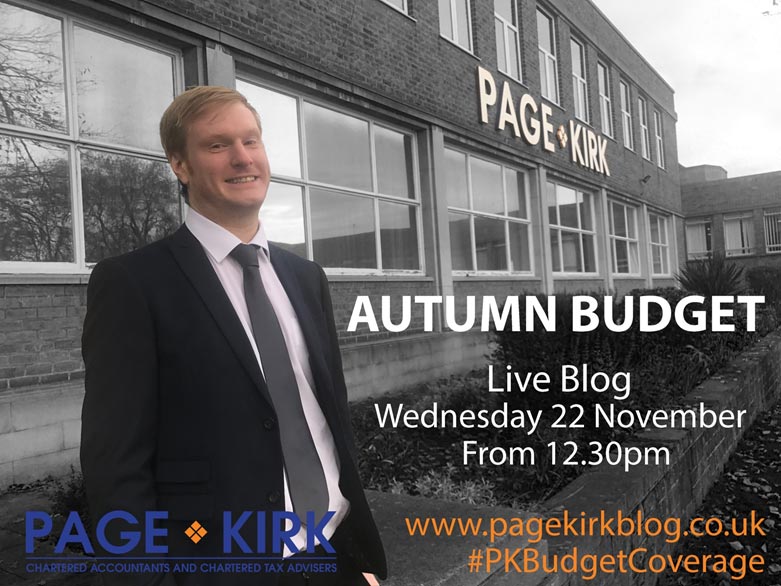Autumn Budget 2017 Predictions

Nick Giles from our tax team will be live blogging as the Chancellor of the Exchequer Philip Hammond delivers his first Autumn Budget on Wednesday 22 November. Follow our up-to-the-minute announcements, summaries and analysis at www.pagekirkblog.co.uk from 12.30pm.
Nick who is one of our tax experts has outlined his predictions ahead of the Autumn Budget.
Budget Predictions
Increase to the Personal Allowance
The government has committed to raising the personal allowance to £12,500 by the 2019/20 tax year. With the personal allowance for 2017/18 currently standing at £11,500, this budget could see it raised to £12,000 from April 2018.
Changes to Pension Relief
With every budget it seems the government is unable to resist tinkering with our pension system as a quick and easy way of raising more revenue for the Treasury. Many feel that this budget will achieve this by making adjustments to the tax relief offered on pension contributions. At present, relief is linked to an individual's income tax rate, with higher rate taxpayers getting 40% tax relief on pension contributions. Rumours have been circulating that the chancellor may seek to restrict this relief, perhaps to a universal flat rate of 20% or 33%. Whilst basic rate taxpayers would be unaffected, or may even stand to benefit, this would represent a significant hit for higher rate taxpayers, many of whom will be in the later stages of their careers and who will therefore place particular importance on the amount of money they are able to accumulate for retirement.
Self-employed National Insurance contributions
The Chancellor's now infamous Spring budget controversially included moves to increase the level of Class 4 National Insurance contributions from 9% to 11%. Whilst the government quickly retracted the plans following widespread discontent from the self-employed and businesses, subsequent pressure from the OECD and the recently published Taylor review has kept the focus on the need to adapt our tax system to the rapidly changing world of work and address the perceived injustice of the disparity between the national insurance contributions of those who are employed and those who are self-employed. This budget could therefore include proposals to revisit plans to review Class 4 national insurance contributions with a view to closing the gap between the employed and self-employed rates.
Changes to EIS and SEIS Investments
These schemes currently allow investors to offset 30% of their investment in qualifying companies against their income tax liability and provide an exemption from Capital Gains tax on any profits made on disposal. This tax break is offered to encourage investment in companies that are perceived as high risk and who can therefore struggle to obtain finance through traditional methods. However, there are concerns with the government that this risk reward trade-off has become skewed by EIS companies failing to pursue risky, high growth strategies and instead pursuing modest growth with less risk. This therefore offers investors a safer investment and can be seen as part of a tax avoidance strategy rather than as an alternative finance source for high risk, growth companies as originally intended. The government may therefore look to tighten the conditions companies would have to meet in order to qualify to raise finance through the EIS scheme. It may also reduce the amount of tax relief offered to investors as well as extending the time period that investors must hold their shares in order to benefit from the tax reliefs.
Follow our live coverage on Wednesday 22 November, 12.30pm at www.pagekirkblog.co.uk.
